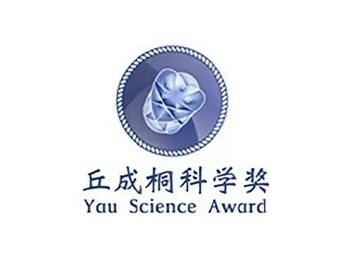MIT PRIMES Application Guide for High School Students
MIT PRIMES, hosted by MIT, is a prestigious academic program for high school students in the U.S. Every year, over 40% of participants are accepted into MIT, and around 80% of graduates receive Ivy League offers.

Being selected for MIT PRIMES is like having one foot in the Ivy League! If you're a U.S. high school student, don't miss this high-value opportunity. Participants in MIT PRIMES work on research tasks under the guidance of MIT professors and Ph.D. researchers, producing valuable research outcomes. You will meet talented and like-minded peers, and your work can be submitted to top international research competitions such as ISEF the S.T. Yau High School Science Awards, and more!
Moreover, PRIMES is the only global program that allows students to form cross-school teams to participate in the Yau Science Awards. Students selected for the PRIMES program have frequently won top awards in the Yau Science Awards.
What is MIT PRIMES?
MIT PRIMES is a free, year-long research program led by MIT, where accepted students collaborate with MIT researchers on projects in mathematics, computer science, and computational biology.

What will you gain from participating in MIT PRIMES?
- A chance to engage in real academic research in mathematics or computer science.
- The opportunity to learn from and collaborate with MIT researchers.
- Learn how to use computational tools like Mathematica, MAGMA, GAP, and SAGE for pure or applied mathematics research.
- Meet outstanding high school students passionate about mathematics.
- Learn how to write research papers, with the possibility of publishing in prestigious academic journals.
- The potential to earn a recommendation letter from a mentor.
- Improve your skills in mathematics, reading, writing, and presentation.
Additionally, you can use your PRIMES project outcomes to compete in top-tier international competitions, such as the S.T. Yau High School Science Awards, Regeneron ISEF, and Regeneron STS, with a high likelihood of success.
In short, MIT PRIMES is a highly competitive research program with an acceptance rate of less than 10%, often considered a "fast track" to MIT. According to MIT's unofficial statistics, approximately 80% of PRIMES graduates have been accepted into Ivy League schools. The list of PRIMES alumni includes students admitted to top U.S. universities like Cornell, Carnegie Mellon, Princeton, and the University of Michigan.
When evaluating applicants, MIT PRIMES considers several factors, including mathematical ability, academic background, research experience, and enthusiasm for learning. Being selected for the program demonstrates a student's exceptional abilities in mathematics, computer science, or biology.
2025 MIT PRIMES Application Guide
For the 2025 MIT PRIMES, a new set of problems will be released, and the application process will begin on October 1, 2024. Applicants must solve the problem sets and submit their solutions by November 30, 2024.
1. Eligibility
Applicants must be high school students residing in the Greater Boston area (or homeschooling students of high school age), or those within driving distance of MIT, as in-person attendance at MIT once a week is required.
2. Application Process
- Select a research area: Applicants can choose between mathematics or computer science and computational biology. While students can apply for both areas, they will only be admitted to one.
- Complete the 2025 problem sets:
Mathematics applicants must solve the mathematics problem set.
Computer science and computational biology applicants must solve both the computer science and the general mathematics problem sets.
- Submit application documents:
Applicants must submit a 1-2 page personal statement highlighting their experiences in mathematics/computer science, their passion for problem-solving, reasons for wanting to join PRIMES, why they would be a strong candidate, and their future goals.
They must also provide 2-3 letters of recommendation, ideally from someone familiar with higher-level mathematics or computer science, such as a math teacher, summer camp counselor, or university professor.
3. MIT PRIMES Program Phases
MIT PRIMES admission decisions will be made in late January. The program consists of four phases:
- Phase I (January 1 – Pi Day):
After admission, students are assigned a mentor and start advanced readings. By early March, they must submit a 5-page reading report approved by their mentor. PRIMES will evaluate their progress and invite the most motivated students to continue to Phase II.
- Phase II (Pi Day – May 31):
During this active research period, students work on their projects under their mentor's guidance and may consult with the MIT faculty who suggested the project. They will submit a progress report by the end of May.
- Phase III (June 1 – August 31):
Students continue working on their projects independently, maintaining contact with their mentors via email. This phase has a flexible schedule, allowing participation in other summer programs.
- Phase IV (September 1 – December 31):
In this final phase, students focus on writing up their projects. With their mentor’s guidance, they prepare to present their work at the PRIMES Fall Conference in mid-October. By the end of the year, they submit a final paper that can be used for national science competitions or journal publications.
4. Key Milestones
March 14: Reading report submission
June 15: Interim research report
Mid-October: Conference presentation
December 1: Penultimate draft of the final paper
December 31/January 15: Final research paper submission
Another Option - Embark Exploration Program
Embark, founded in 2016, is an educational institution focused on providing customized scientific research training for teenagers. The core team consists of graduates from prestigious U.S. universities. Embark has over 3,000 mentors from renowned schools like the Ivy League, MIT, Caltech, Johns Hopkins, and Carnegie Mellon.
Embark offers personalized one-on-one research guidance, creating custom research topics based on students' interests. Embark helps students systematically develop research skills, establish a solid research framework, connect research with real-world applications, appreciate the value of research, and enhance their problem-solving abilities, all of which strengthen their college applications.
For more information, please visit the Embark Exploration Program. If you have any questions or need further information, feel free to contact us. We are happy to assist and discuss possible collaboration opportunities.



